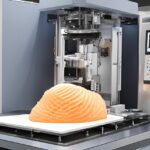
What is Rapid CNC Prototyping
21 May 2024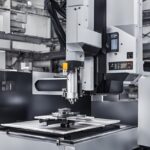
Guide to CNC Machining CNC Machining and Programming: How it Works and Why it’s Revolutionizing the Industry
28 May 2024Bearings are crucial components in mechanical equipment. Their primary function is to support the mechanical rotating body and reduce the friction coefficient of the mechanical load during the equipment's transmission process.
Bearings are categorized into radial bearings and thrust bearings based on different load-carrying directions or nominal contact angles. The types of rolling elements include ball bearings and roller bearings.
They are further classified into self-aligning bearings and non-aligning bearings (rigid bearings) based on whether they can be aligned. Based on the number of rows of rolling elements, they are divided into single-row bearings, double-row bearings, and multi-row bearings. Additionally, based on whether the components can be separated, they are divided into separable and non-separable bearings.
There are also classifications based on structural shape and size.
This article mainly shares the characteristics, differences, and corresponding uses of 14 common bearings.
1. Angular contact ball bearings
The contact angle between the ferrule and the ball is important. Standard contact angles are 15°, 30°, and 40°. A larger contact angle means a greater axial load capacity, while a smaller contact angle is better for high-speed rotation. Single-row bearings can handle radial load and unidirectional axial load. Structurally, two single-row angular contact ball bearings combined on the back share the inner and outer rings and can handle radial load and bidirectional axial load.
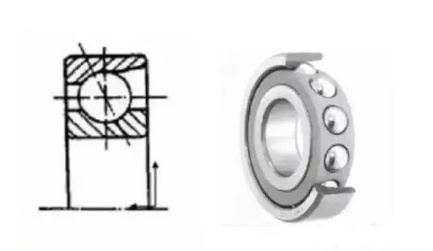
Angular contact ball bearings
The main purpose:
Single row:
- Machine tool spindle
- High-frequency motor
- Gas turbine
- Centrifugal separator
- Small car front wheel
- Differential pinion shaft
Double row: oil pumps, Roots blowers, air compressors, various transmissions, fuel injection pumps, and printing machinery.
2. Aligning ball bearings
The bearing has double rows of steel balls, with an outer ring raceway that is an inner spherical type. This design allows it to automatically adjust for shaft misalignment caused by deflection or non-concentricity of the shaft or housing. The tapered bore bearing can be easily installed on the shaft using fasteners. It is mainly designed to bear radial loads.
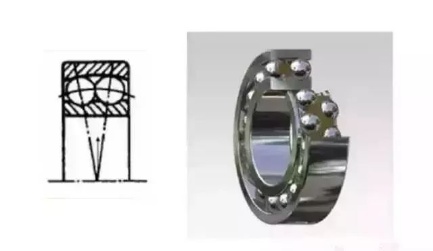
Aligning ball bearings
Main uses: woodworking machinery, textile machinery drive shafts, vertical seated self-aligning bearings.
3. Spherical roller bearings
This type of bearing is equipped with spherical rollers positioned between the spherical raceway outer ring and the double raceway inner ring. It is divided into four types: R, RH, RHA, and SR based on different internal structures. Because the arc center of the outer ring raceway is consistent with the bearing center, it has self-aligning performance. This allows it to automatically adjust the shaft center misalignment caused by deflection or non-concentricity of the shaft or housing. Additionally, it can withstand radial loads and bidirectional axial loads.
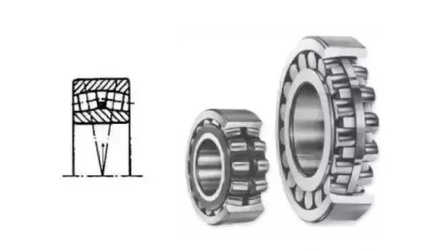
Spherical roller bearing
Main uses: papermaking machinery, reduction gears, railway vehicle axles, rolling mill gearbox seats, rolling mill rollers, crushers, vibrating screens, printing machinery, woodworking machinery, various industrial reducers, vertical seated spherical bearings.
4. Thrust spherical roller bearings
The spherical rollers in this type of bearing are arranged obliquely. The raceway surface of the seat ring is spherical and has self-aligning properties, allowing the shaft to tilt to some extent. It has a very large axial load capacity and can withstand several axial loads at the same time. Generally, it is used for radial load and oil lubrication.
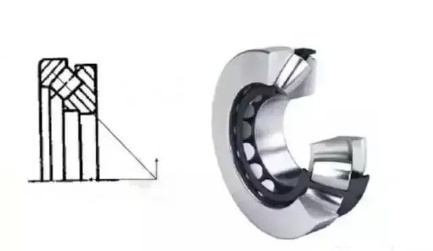
Thrust spherical roller bearing
Main uses: hydraulic generators, vertical motors, propeller shafts for ships, reducers for rolling screws in rolling custom cnc milling, tower cranes, coal mills, extruders, and forming machines.
5. Tapered roller bearings
This type of bearing is equipped with truncated cone-shaped rollers. The rollers are guided by the large ribs of the inner ring. They are designed so that the vertices of the conical surfaces of the inner ring raceway surface, the outer ring raceway surface, and the roller rolling surface intersect at the center line of the bearing, on point. Single-row bearings can bear radial loads and one-way axial loads, while double-row bearings can bear radial loads and two-way axial loads and are suitable for bearing heavy loads and impact loads.
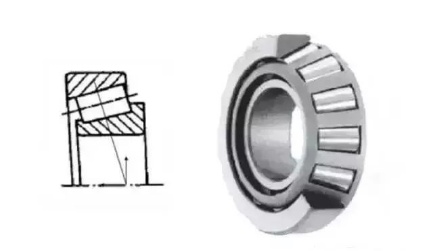
Tapered Roller Bearings
Main uses: Automobiles: front and rear wheels, transmissions, differential pinion shafts. Machine tool spindles, construction machinery, large agricultural machinery, railway vehicle gear reduction devices, rolling mill roll necks, and reduction devices.
6. Deep groove ball bearings
The deep groove ball bearing consists of rings with a continuous groove raceway that covers approximately onethird of the ball's equatorial circumference. These bearings are primarily designed to handle radial loads, but can also withstand certain axial loads.
When the radial clearance of the bearing increases, it exhibits properties similar to an angular contact ball bearing, enabling it to withstand alternating axial loads in two directions. Compared to other bearings of the same size, this type of bearing has a smaller friction coefficient, a higher limit speed, and greater precision. As a result, it is the preferred choice for many users.
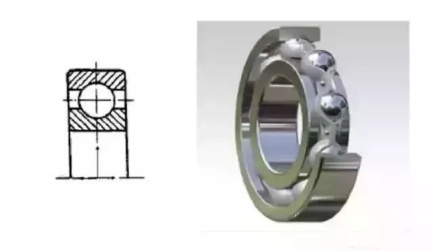
Deep groove ball bearings
Main uses: automobiles, tractors, machine tools, motors, water pumps, agricultural machinery, textile machinery, etc.
7. Thrust ball bearings
The bearing consists of a washershaped raceway ring with a raceway, and a ball and cage assembly. The raceway ring that matches the shaft is called a shaft ring, and the raceway ring that matches the housing is called a seat ring. The two-way bearing matches the inner ring of the shaft, while the one-way bearing can bear a one-way axial load, and the two-way bearing can bear a two-way axial load. Neither can bear a radial load.
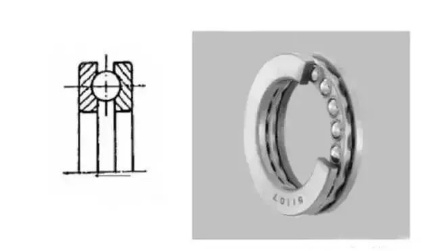
Thrust ball bearing
Main uses: automobile steering pins, machine tool spindles.
8. Thrust roller bearings
Thrust roller bearings are designed to support shafts that primarily bear axial loads and combined radial loads, with the radial load not exceeding 55% of the axial load. This type of bearing offers lower friction, higher rotation speed, and the ability to adjust compared to other thrust roller bearings. The 29000 bearings feature asymmetric spherical rollers, which minimize sliding between the shaft and the raceway during operation. These long, large-diameter rollers provide a high load capacity due to their large number. Typically, these bearings are lubricated with oil, although grease lubrication is suitable for low speeds.

Thrust roller bearing
Main uses: hydraulic generators, crane hooks.
9. Cylindrical roller bearings
The rollers of cylindrical roller bearings are typically guided by two ribs on a bearing ring. The cage roller and guide ring form an assembly that can be separated from another bearing ring, making it a separable bearing.
This type of bearing is more convenient to install and disassemble, especially when an interference fit between the inner and outer rings, the shaft, and the housing is necessary. These bearings are generally only used to bear radial loads. Singlerow bearings with ribs on both the inner and outer rings can only bear small, steady axial loads or large intermittent axial loads.

Cylindrical Roller Bearings
Main uses: large motors, machine tool spindles, axle boxes, diesel engine crankshafts, automobiles, transmission boxes with bearings, etc.
10. Four-point contact ball bearings
This type of bearing can withstand both radial and bidirectional axial loads. A single bearing can replace either the front or back combination of angular contact ball bearings. It is suitable for bearing pure axial loads or synthetic loads with large axial load cnc machining components. This bearing can withstand loads in any direction. When subjected to an axial load, one of the contact angles is formed, ensuring that the ball and the ferrule are always in contact at three points on both sides of any contact line.

Four-point contact ball bearings
Main uses: aircraft jet engines, gas turbines.
11. Thrust cylindrical roller bearings
The bearing consists of a washer shaped raceway ring (shaft ring, seat ring) and cylindrical roller and cage components. The cylindrical roller is processed with a convex surface, so the pressure between the roller and the raceway surface is evenly distributed. As a result, it can withstand one-way axial load, has a large axial load capacity, and exhibits strong axial rigidity.
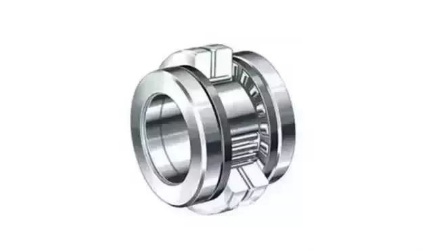
Thrust cylindrical roller bearings
Main uses: oil drilling rigs, iron and steel-making machinery.
12. Thrust needle roller bearings
Separable bearings consist of raceway rings, needle rollers, and cage assemblies, and can be combined with either stamped thin raceway rings or cut-processed thick raceway rings. Non-separable bearings are integral bearings composed of precision-stamped raceway rings, needle rollers, and cage assemblies, and can withstand unidirectional axial loads. This type of bearing takes up minimal space and is conducive to the compact design of machinery. In most cases, only the needle roller and cage assembly are used, and the mounting surface of the shaft and housing is utilized as the raceway surface.
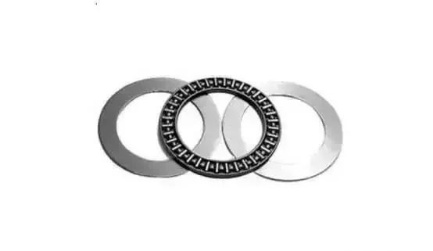
Thrust needle roller bearing
Main uses: transmission devices for automobiles, cultivators, machine tools, etc.
13. Thrust tapered roller bearings
This type of bearing is equipped with truncated cone-shaped rollers (the big end is spherical). The rollers are accurately guided by the ribs of the raceway ring (shaft ring, seat ring). The design ensures that the raceway surfaces of the shaft ring and seat ring and the rolling surface of the rollers all intersect at a point on the bearing center line. One-way bearings can bear one-way axial loads, and two-way bearings can bear two-way axial loads.
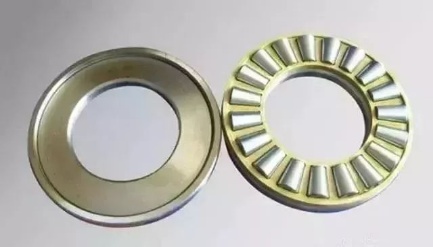
Thrust tapered roller bearings.
The main purpose:
One-way: Crane hook, oil drilling rig swivel.
Both directions: rolling mill, roll neck.
14. Insert spherical ball bearing with seat
The seated spherical ball bearing consists of a spherical ball bearing with seals on both sides and a bearing seat made of die cast or stamped steel. The outer spherical ball bearing has the same internal structure as a deep groove ball bearing, but its inner ring is wider than the outer ring. The outer ring has a spherical outer surface, allowing it to automatically align with the concave spherical surface of the bearing seat.
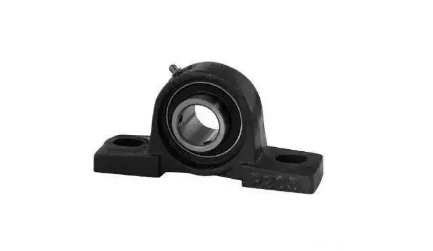
Main uses: mining, metallurgy, agriculture, chemical industry, textile, printing and dyeing, conveying machinery, etc.
Anebon supports our purchasers with ideal premium quality products and is a substantial level company. Becoming a specialist manufacturer in this sector, Anebon has acquired rich practical working experience in producing and managing for 2019 Good Quality Precision CNC Lathe Machine Parts/Precision Aluminum rapid CNC machining parts and CNC milled parts. The Aim of Anebon is to help customers realize their goals. Anebon is making great efforts to achieve this win-win situation and sincerely welcomes you to join us!




